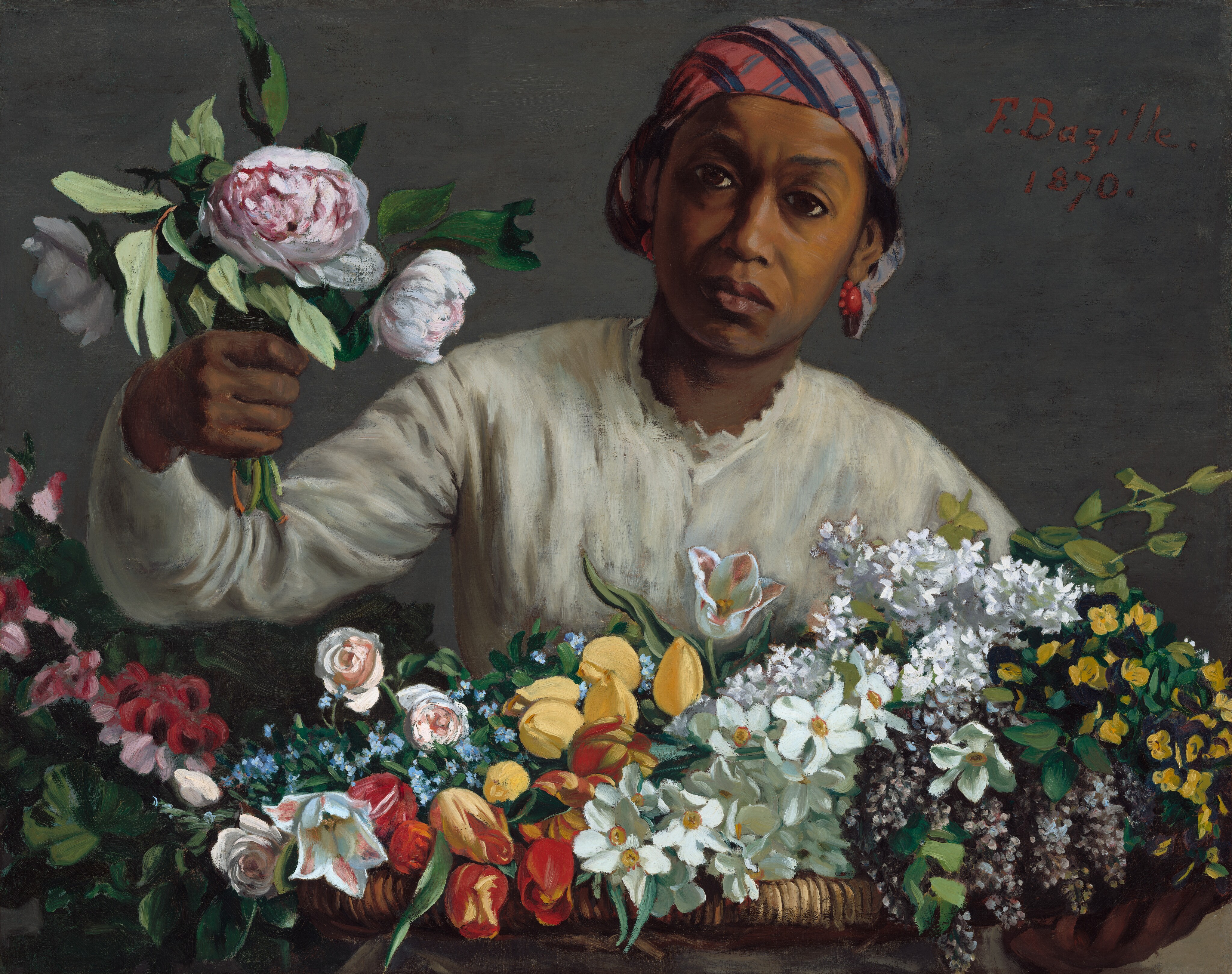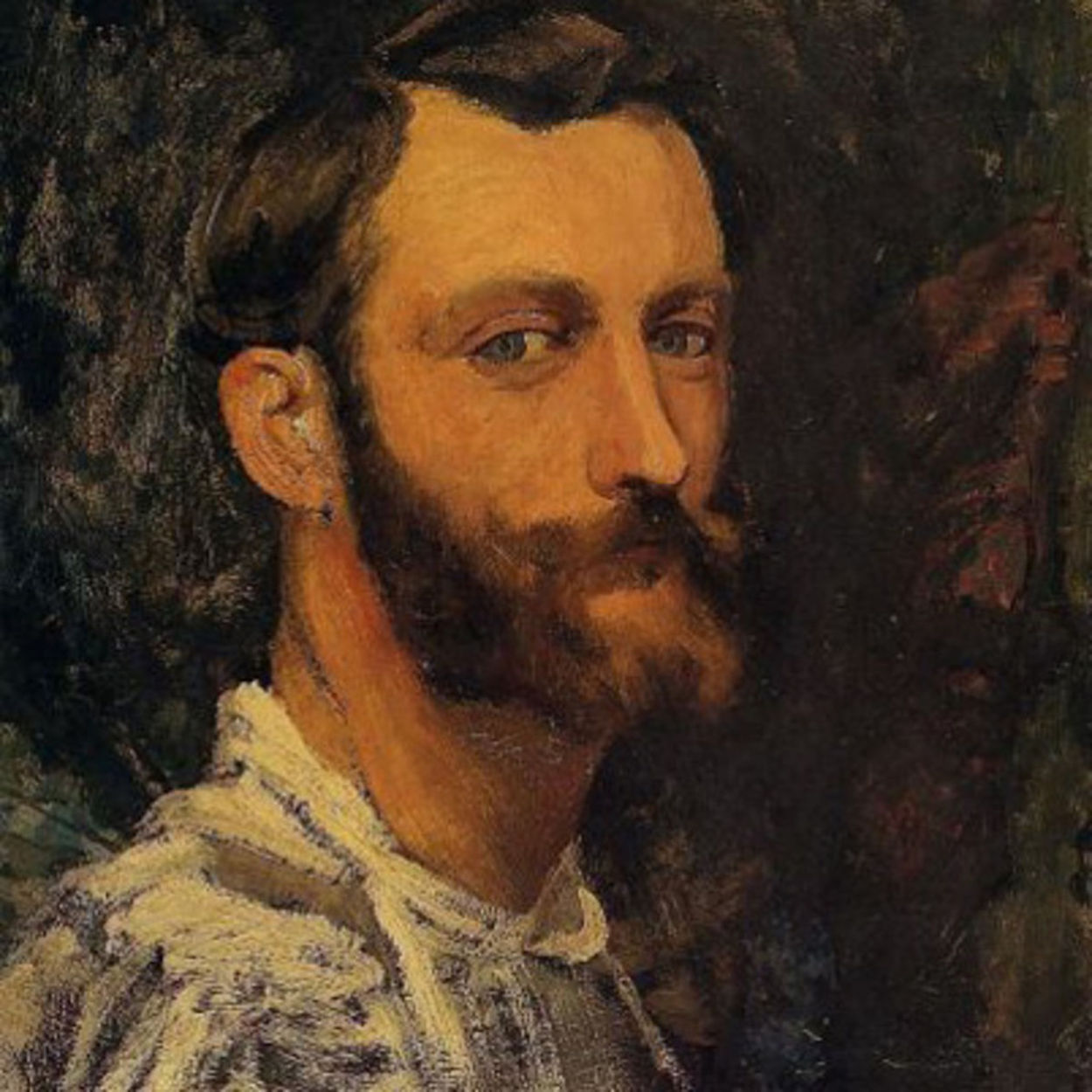In 1862, Bazille arrived in Paris to study both medicine (at his parents' insistence) and art (his preference). He joined the academic teaching studio run by Charles Gleyre, where he met Monet, Renoir, and Sisley. Attracted by the modernist tendencies of avant-garde art, the four abandoned the studio in favor of direct observation of nature—later they gradually invented Impressionism. Bazille's career was cut short when he was killed in 1870 during the Franco–Prussian War. Nobody knows how different art history would be if he had survived.
Early in the summer of 1870, before the outbreak of war, Bazille painted two similar works depicting a black woman with a lush array of flowers. Avoiding anecdotal specificity, the woman in the National Gallery painting is posed as a vendor extending a clutch of peonies chosen from her basket laden with seasonal blooms. The proffered peonies, flowers cultivated by Manet and the subject of a series of still lifes he painted in 1864–1865, are firmly portrayed in a manner reminiscent of Manet. Extending his modest tribute to the debonair leader of the avant-garde, Bazille's composition also alludes to one of Manet's most celebrated and notorious works, Olympia, in which a black servant offers a floral tribute to a naked prostitute.
P.S. The depictions of people of color are currently being revisited. It is a part of broader trends in art history aiming to discover long-forgotten areas. Here you can read how the Rembrandthuis decolonizes Black in Rembrandt’s time.


 Frédéric Bazille
Frédéric Bazille